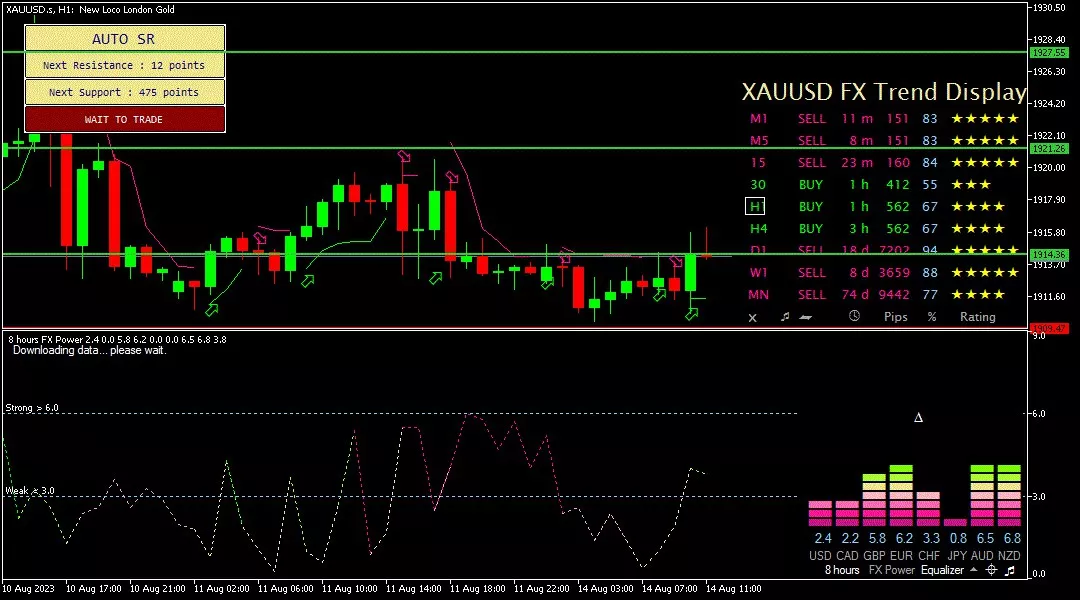Jakarta, GIC Trade – Gold remained below $1,920 per ounce in Monday's trading, hitting a five-week low and facing pressure from a strong dollar and Treasury yields.
The dollar strengthened as U.S. producer inflation reports for July came in hotter than expected, fueling expectations that the Federal Reserve would keep interest rates higher for longer.
Investors are also preparing for U.S. retail sales figures and minutes from the Fed's latest policy meeting this week, which could guide economic and interest rate outlooks.
Gold prices continue to be in a bearish zone at monthly lows, having witnessed a downward trend for four weeks, as headlines from China shake market sentiment and support demand for the safe-haven U.S. dollar.
Adding to the risk-off atmosphere are geopolitical concerns regarding Russia and stronger U.S. Treasury yields, which in turn have allowed the U.S. Dollar Index (DXY) to remain strong after rising over the past four weeks.
Notably, the suspension of bond trading by China’s Country Garden, along with missed payments from the Chinese conglomerate Zhongzhi Enterprise Group's subsidiary, has heightened China's debt woes.
Elsewhere, Russia's readiness to equip new nuclear submarines with hypersonic missiles and the U.S.-China trade war are also contributing to the risk-off sentiment, which in turn weighs on gold prices.
Fundamentally, the hotter-than-expected U.S. producer inflation report for July triggered expectations that the Federal Reserve would keep interest rates higher for longer, providing positive sentiment for safe-haven assets like the dollar, thereby pressuring gold prices. Now, let’s look at the technical analysis:
Technical Analysis

In the one-hour period, gold prices attempted to rise, touching resistance at 1917.50 and heading towards the next resistance level at 1924.10. The bullish bias is also supported by a buy signal indicated by a green arrow.
This analysis reflects the author's views based on fundamental and technical aspects and does not constitute advice or an invitation. For more information, click the image below.


 Last:
Last: 




